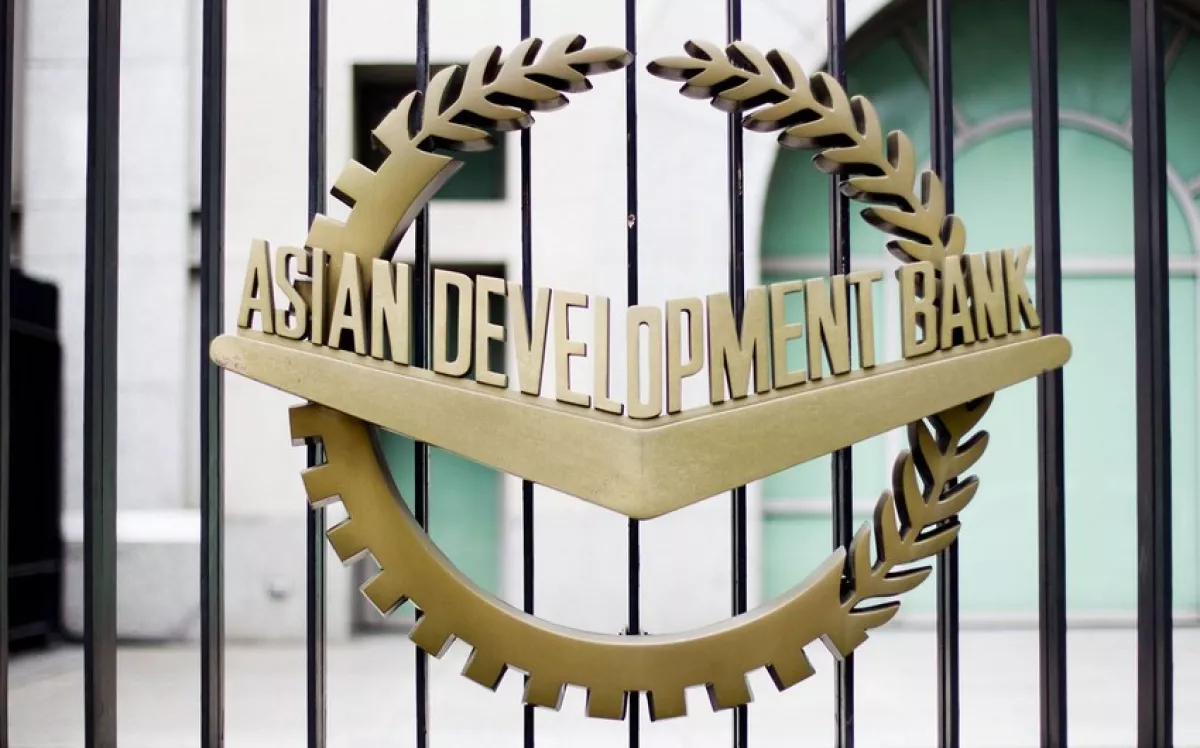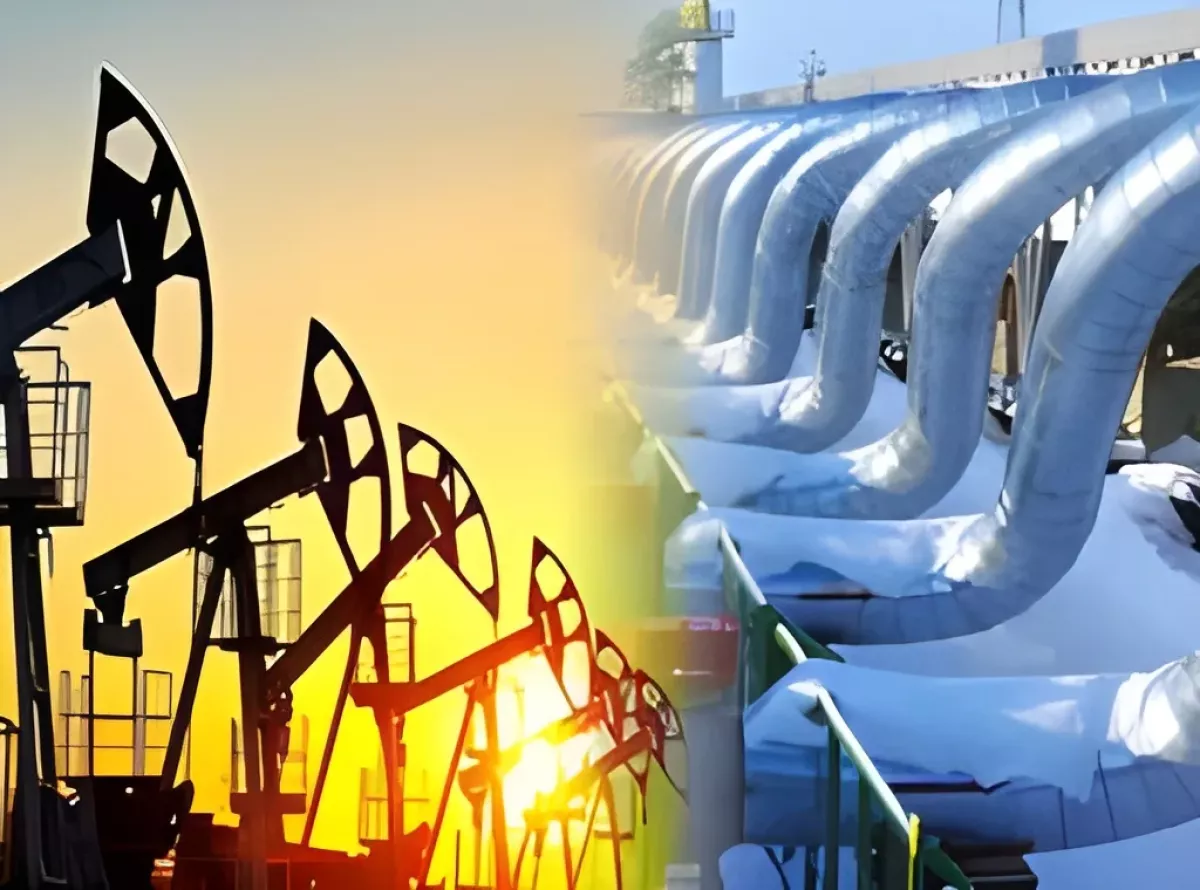Stability through diversification Azerbaijan in the ADB spotlight
Ongoing geopolitical tensions and a slowdown in global industrial and trade activity in recent years are contributing to weaker economic and trade growth in the U.S., the EU, and, to some extent, China. These challenges, compounded by trade disputes and high volatility in global hydrocarbon prices, are influencing the outlooks of international donors and rating agencies.
According to the latest forecasts from the Asian Development Bank (ADB), Azerbaijan’s GDP is expected to grow by 2.4% in 2025, slowing slightly to 2% in 2026. Despite instability in the oil sector, ADB experts note that the country’s economic fundamentals remain strong, with robust budget revenues supporting a continued fiscal surplus.
According to the World Economic Outlook report released by the International Monetary Fund (IMF) at the end of July, the global economic growth forecast for 2026 has increased marginally by just 0.1 percentage point, reaching 3.1%. This indicates that projected GDP growth remains well below the IMF’s long-term average of 3.7%, which approximates pre-crisis levels.
Meanwhile, the Asian Development Bank (ADB) expects relatively strong economic performance in the Asia-Pacific region (APR), with growth of around 4.5% in 2026, noticeably above the global average. Growth in Southeast Asian countries is projected to be slightly lower, at 4.3%.
At the same time, the September ADB report notes that economic growth in the South Caucasus and Central Asia (CA) region is projected at a robust 5.5% in 2025, before easing slightly to 4.9% in 2026. In the post-Soviet region, growth is primarily driven by Central Asian countries, with Kazakhstan highlighted as showing particularly promising prospects.
The report also observes moderate growth in the South Caucasus economies.
At the same time, the September ADB report notes that in the South Caucasus and Central Asia (CA) region, economic growth is projected at a fairly strong 5.5% in 2025, but it is expected to decline to 4.9% in 2026. Notably, when assessing growth dynamics in the post-Soviet region, the drivers of growth are identified as the Central Asian countries, with improving prospects in Kazakhstan highlighted in particular.
According to the ADB report, the economies of the South Caucasus countries are showing moderate growth. “ In the first half of 2025, expansion slowed in Armenia, with contraction in industry and slower growth in services outweighing faster growth in agriculture and construction [...] In Georgia, strong performance in information technology and construction drove growth, as did robust private consumption. Higher receipts from tourism and transportation supported expansion in the external sector and Georgia’s emerging role as a key transit route and tourist destination in the region,” the ADB review states.

Unfortunately, the decline in global demand and prices for hydrocarbons is affecting Azerbaijan’s oil and gas sector, which continues to account for a significant share of the country’s total exports. For several consecutive years, oil production has fallen due to the depletion of major fields, particularly a reduction in output at the Azeri-Chirag-Gunashli (ACG) field. This combination of declining production and low global prices is negatively impacting the country’s foreign trade balance. According to the State Customs Committee of the Republic of Azerbaijan (SCC), from January to August 2025, the country’s foreign trade operations amounted to $32.118 billion, with domestic exports falling by 6.4%, resulting in a positive trade balance of $2.013 billion — nearly 2.7 times lower than during the same period last year.
These trends are also highlighted in the ADB report: “In Azerbaijan, economic activity moderated, with growth slowing to 1.5% from 4.3% in the same period of 2024 as 3.1% contraction in the hydrocarbon sector from lower oil and gas production more than offset 3.9% expansion in other activities, particularly construction.” Given the current situation, the Asian Development Bank projects Azerbaijan’s economic growth at 2.4% in 2025 and 2% in 2026.

Comparing these figures with forecasts from the government, other international financial organisations (IFIs), and rating agencies, it can be noted that, despite variations in percentages, expert estimates for the coming year are slightly lower than for the current year. For comparison, Azerbaijan’s Ministry of Economy projects GDP growth of 3% in 2025, decreasing slightly to 2.9% in 2026. Meanwhile, the World Bank (WB) expects growth of 2.6% this year and 2.4% in 2026, while the IMF forecasts 3.5% and 2.5%, respectively.
Regarding international rating agencies, S&P Global anticipates growth of 2% per year in 2025–2026, Fitch Ratings predicts 3.5% in 2025 and 2.5% in 2026, and Moody’s estimates growth at around 2.5% annually. The European Bank for Reconstruction and Development (EBRD) offers a slightly different outlook: in its September report Regional Economic Prospects, it forecasts Azerbaijan’s economic growth at 2% in 2025, with an increase to 2.5% in 2026, driven by expected activity in the non-oil sector that will offset weaker performance in oil.
“Azerbaijan’s sovereign rating to Baa3 in June 2025, highlighting the country’s fiscal resilience. Real GDP is forecast to grow by 2 per cent in 2025 and 2.5 per cent in 2026, with solid non-oil activity offset by weaker hydrocarbons. Energy price volatility, global trade uncertainty and regional geopolitics pose downside risks. Upside potential stems from the cooperation on energy with the EU, expansion of the Middle Corridor and the US-backed peace framework with Armenia, which could unlock new trade routes and improve investor confidence,” the EBRD review notes.
Meanwhile, experts from the Netherlands’ largest banking group, ING Group, forecast Azerbaijan’s economic growth at 2.3% in 2025 and 2.5% in 2026, with a decline to 2% expected only in 2027.
In any case, experts from most international financial organisations believe that, despite fluctuations in specific economic sectors, Azerbaijan continues to maintain high macroeconomic stability and resilience to external risks. In this context, the growing year-on-year significance of the non-oil sector in the domestic economy is taken into account: while its share of GDP was 49% in 2011, it reached 68% by the end of 2024.
Moreover, today the growth rates of non-resource sectors significantly exceed the overall dynamics of the domestic economy. For comparison, while total GDP growth in 2024 was 4.1%, the non-oil sector grew by 6%, and growth in the non-oil industrial segment even reached 7%. In this regard, the ADB also notes that in the first half of this year, Azerbaijan’s construction sector expanded by 8.5% thanks to increased government investment in reconstruction projects, while agriculture accelerated by 1.4% compared to 0.2% the previous year, supported by increased crop production.

The Asian Development Bank’s optimism is also linked to high budget revenues, which have allowed Azerbaijan to maintain a fiscal surplus. In the first half of 2025, revenues rose to 31.9% of GDP, supported by higher tax receipts and increased transfers from the State Oil Fund. Despite a concurrent rise in expenditures, the country recorded a budget surplus of 4.4% of GDP in January–June 2025.
Recent data from the Central Bank of Azerbaijan (CBA) further highlight the country’s strong external position. The current account, the main component of the balance of payments, registered a surplus of $2.3 billion in the first half of 2025, equivalent to around 6.3% of GDP. According to the ADB, despite lower revenues from energy trade, Azerbaijan has maintained a solid external position. “Meanwhile, the balance of services was in deficit, with exports up by 19.9% but outpaced by imports up by 24.1%. Over the first 6 months of 2025, combined foreign exchange reserves in the sovereign wealth fund and the central bank increased by $6.7 billion to $77.6 billion, equal to 105% of GDP and about 15 times the economy’s public external debt. Central bank reserves stood at $11.2 billion, covering 8.9 months of goods imports,” the report states.
It is also worth recalling information regarding inflation prospects in Azerbaijan. “Inflation accelerated in the first half of 2025 on higher import prices and administrative price increases in mid-2024 and early 2025. Average annual inflation rose from 0.7% in the first half of 2024 to 5.9% as prices increased by 6.6% for food, 2.7% for other goods, and 7.5% for services,” the Asian Development Bank review notes. The report also states that inflation is expected to slow in the second half of 2025 as the effects of administrative price adjustments subside. Overall, the ADB forecasts annual average inflation in Azerbaijan at 4.2% in 2025, decreasing to 3.5% in 2026.








